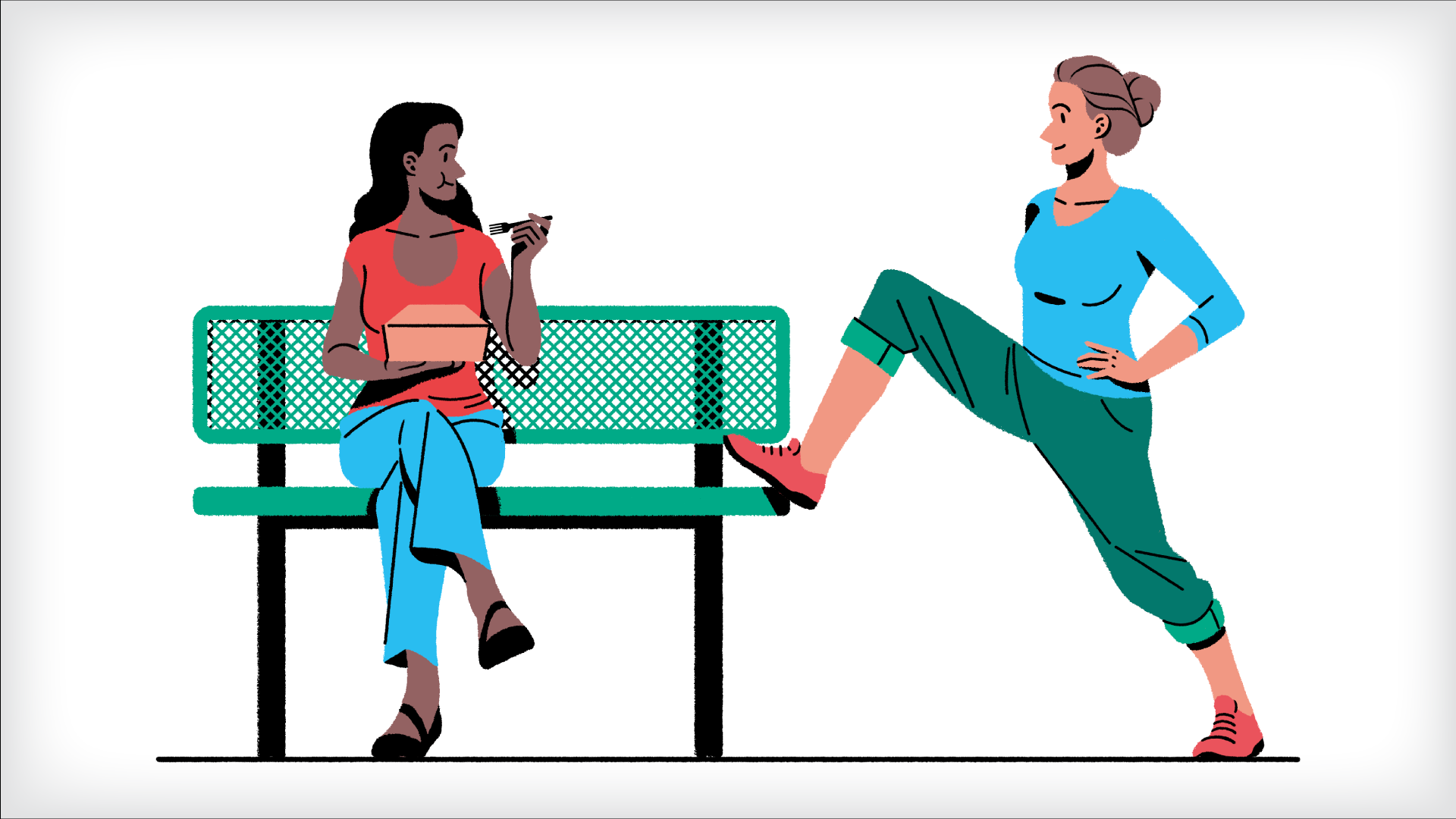Move It For Your Mood

Physical activity comes with psychological and physiological benefits that can help improve mood and manage stress.
All forms of exercise — from walking and jogging to yoga and weight lifting — can help reduce feelings of anxiety and stress. Plus, many forms of movement are free, accessible to all individuals, and doesn’t come with any unpleasant side effects (when done properly).
Both high- and low-intensity workouts offer physiological benefits by triggering a series of chemicals events that help improve brain function and regulate mood. That means, regardless of your current level of physical fitness, there are plenty of exercises and movements you can practice — anytime or anywhere — to help relieve stress.
But how much physical activity is necessary to start feeling the benefits? The Mayo Clinic suggests doing 30 minutes of exercise a day for three to five days a week, but don’t feel like you have to get it all done in one session.
Beginning this Monday, try to record 150 minutes of physical activity per week by using our list of small steps to get you moving. Because getting active doesn’t have to be a workout.
Related Articles

The Physical and Environmental Benefits of Biking
Biking is an excellent form of exercise that can improve your physical health as well as save the environment from one more car on the road.

Make the Most Out of Your Lunch Break
Implementing a lunch break workout routine may have positive effects on the way you work throughout the day. Benefits can include stress reduction as well as improvements in concentration, memory, creativity, and the ability to learn new things.

Outdoor Activities for a Summer Time Sweat
This Monday, let the outdoors be your gymnasium. Exercising in a park or wooded area allows you to experience the beauty of nature while getting in your daily physical activity.